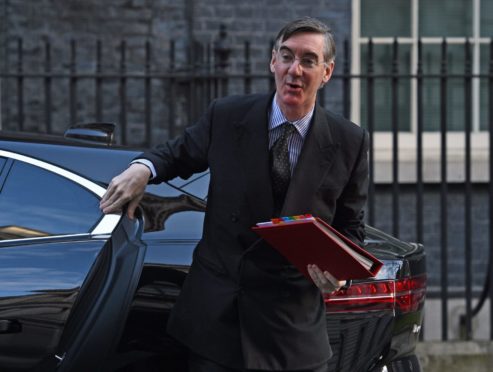Eighteenth-century time traveller and leader of the House of Commons Jacob Rees-Mogg wants MPs back in Westminster next month to “set an example”.
Because of course the general public at large look to members of parliament for clues as to how to behave.
That’s why Chelsea shirts and adultery were de rigueur during the Major years in the 1990s, everyone tried to cadge a free holiday off Richard Branson while Tony Blair was in Number 10, and the taxman’s been overwhelmed with expense claims for moat cleaning since 2009.
When MPs were last in the Commons en masse they crammed in for the Budget speech back in March.
At the time any sensible observer could see that whatever Rishi Sunak announced was about to be overwhelmed by the global pandemic breaking across Britain. It was daft.
And sure enough a number of MPs caught coronavirus. And no one thought what a fine example they’d all set by going to work, shouting at each other, getting ill, and adding to the burden on the NHS.
For the past few weeks MPs have been mainly working from home like the rest of us and getting to grips with new technology.
Rees-Mogg’s explanation for wanting to bring the virtual parliament to an end makes some sense when viewed in light of one of this administration’s explicit goals; to improve the standing of politics and parliamentarians. Martyrdom, however, might be taking it a bit far.
Government sources claim MPs should be back in Westminster because it’s a bad look to tell other people to think about returning to work while still staying at home on safety grounds yourself.
It’s a worse look if a government doesn’t understand the modern world in which work will no longer be defined by being in a specific place for certain hours. An administration as out of whack with its electorate on something as fundamental as that will wobble very quickly.
There’s another theory that Tory whips want MPs back in London so they can enforce discipline – how they intend to twist arms from a two-metre distance is anyone’s guess – and get a better idea of what the feeling is in the party with regard to Downing Street’s pandemic response.
Others reckon that after being found out at prime minister’s questions recently, Johnson wants more people in the Commons to cheer him on. The sight of him blustering to a silent room has certainly been slightly pathetic.
His schtick benefits from an audience. It’s depressing that his response is not to work harder on his homework and his policies so he’s solid in his responses to the Labour leader’s surgical skewering, but instead demand his mates come back, laugh to order at his jokes and pull faces at the opposition.
MPs should govern, legislate, make decisions and they should live by the same decent standards as the rest of us. Setting an example isn’t necessarily in the remit.
But we should be paying attention to Rees-Mogg’s hardline approach to how business is conducted. For it could end up costing us all a small fortune.
Yesterday the body in charge of parliament’s restoration and renewal project announced they were going to have a rethink.
Politicians, architects, historians and mandarins have been wrestling with what to do about Westminster for years now. The palace is falling down and vulnerable to flood and/or fire at any moment.
A decision was finally made, plans unveiled for a fake Commons next door while the real thing is restored over the course of some years, likely up to a decade. Then came coronavirus.
All involved have understood that with the economy expiring and the nation looking at a £330 billion bill for this crisis, adding £4bn to the cost for a sparkly parliament might not play well with the millions who are going to be on their uppers or unemployed.
The virtual parliament offers a way out. No need to build a mocked-up Commons if MPs can dial in to question ministers and vote with their iPad. A slimmed down rescue package seems possible.
But not if Rees-Mogg kiboshes the virtual parliament before it’s had a chance to prove itself properly.
Rees-Mogg won’t be out of pocket no matter how the economy flounders, so maybe he’s comfortable with the spending on parliament.
Maybe he’s just a stickler for tradition.
He notably suggested that victims of the Grenfell Tower tragedy lacked common sense for following the building’s fire guidelines.
Perhaps asking us to fork out a few quid for a Rolls-Royce level restoration in a time of economic armageddon just because he doesn’t like Skype is what passes for common sense in Rees-Mogg’s world. It’s not.
We’ve all had to get used to virtual meetings and we’re all going to have to get used to tough economic times. Rees-Mogg should not be an exception.
James Millar is a political commentator and author and a former Westminster correspondent for The Sunday Post
